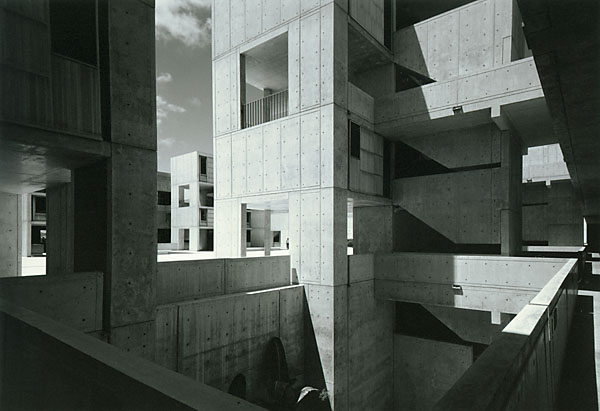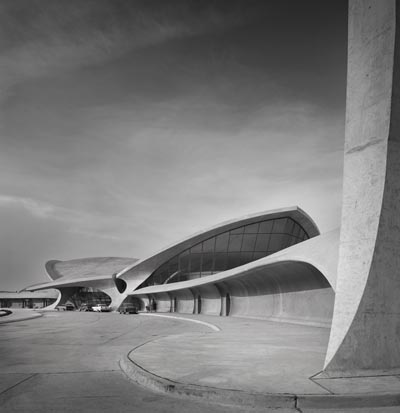|
January 15, 2011
Ezra Stoller, the American architectural photographer, was modernist to his bootstraps. He made some iconic images that helped establish the hegemony of the modern movement during his heyday, which lasted from the 1930s into the 1970s.
 Ezra Stoller: Kitt Peak (Myron Goldsmith/SOM), 1962. Gelatin silver print
Ezra Stoller: Kitt Peak (Myron Goldsmith/SOM), 1962. Gelatin silver print
Stoller, who died in 2004 at age 89, was the foremost chronicler of Modernist architecture, using his large-format camera to record seminal 20th-century works like Mies van der Rohe’s Seagram Building, Frank Lloyd Wright’s Fallingwater and Guggenheim Museum, and Eero Saarinen’s TWA Terminal at Idlewild Airport (now Kennedy).
He had the ability to capture the building according to the architect's vision and to lock it into the architectural canon. His photographs convey a three-dimensional experience of architectural space through a two-dimensional medium, with careful attention to vantage point and lighting conditions, as well as to line, color, form and texture.
 Ezra Stoller: Salk Institute (Louis I. Kahn), 1977, Gelatin silver print
Ezra Stoller: Salk Institute (Louis I. Kahn), 1977, Gelatin silver print
Stoller was the seminal figure in a group of talented American photographers who first emerged about 1930. They were devoted modernists and their images were crucial in introducing modern architecture to the larger culture. Architects, in turn, were influenced by the photographers, and designed in the hope of inspiring a great image from Stoller, Julius Shulman, Balthazar Korab, Hedrich Blessing, Joseph Molitor, Morley Baer, or Cervin Robinson.
 TWA Terminal at Idlewild (now JFK) Airport, Eero Saarinen, New York, NY
TWA Terminal at Idlewild (now JFK) Airport, Eero Saarinen, New York, NY
Stoller's usual procedure was to walk the structure with a rough floor plan in hand. He would mark on the plan the best vantage points, and note the moment of the day when light would be optimal for each shot. He was a master of chiaroscuro, the abstract patterning of shadow and light, in a manner that sometimes evokes Hollywood films of the noir era. He almost always worked in very deep focus, with every detail from the foreground to the horizon pin-sharp.
|
